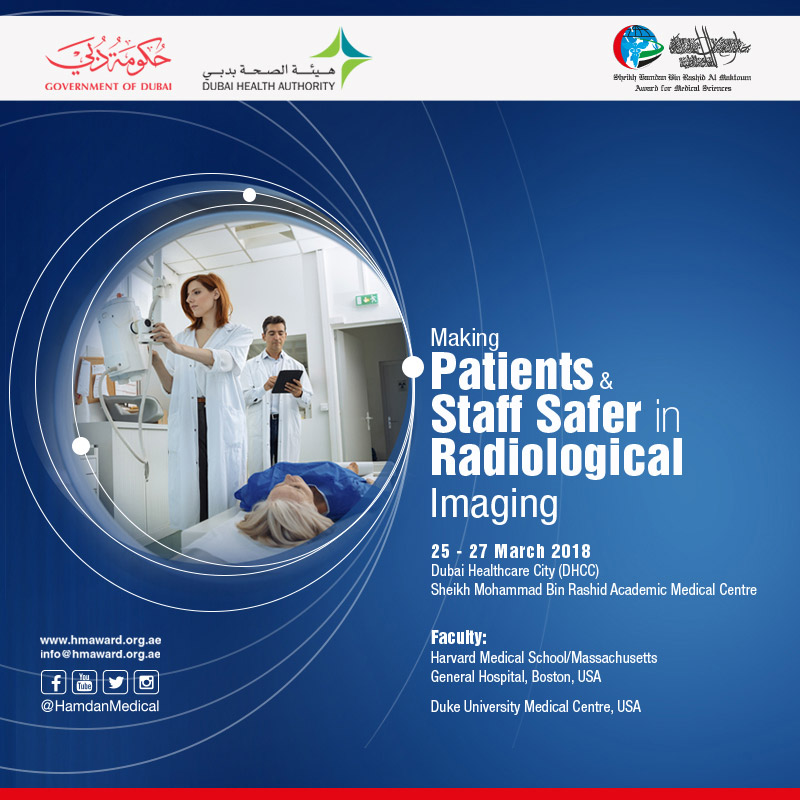Prof. John A Kanis
International Awards
Hamdan Award for Medical Research Excellence
- Osteoporosis
2009-2010
Personal Details/Academic Background
Prof. John A Kanis received his medical degree from the University of Edinburgh in 1970. After a MRC Clinical Research Fellowship at the Nuffield Orthopaedic Centre, he became the Wellcome Senior Research Fellow and Lecturer at the University of Oxford, which had awarded him MA honoris causa in 1977. He also got the MD honoris causa from the University of Gothenburg in 2009.
Responsibilities and Assignments
He is the Emeritus Professor in Human Metabolism and Clinical Biochemistry at the University of Sheffield since October 2002. He is the director of WHO Collaborating Centre for Metabolic Bone Diseases at the University of Sheffield, UK, since 1991. He is the editor-in-chief of Osteoporosis International since 2008 and has been a World Health Organisation (WHO) advisor on osteoporosis since 1988. He is a consultant to the China’s Ministry of Public Health since 1992 and an advisor to Ministry of Health, Singapore.
Professional Milestones
Prof. Kanis’ research interests are largely related to disorders of skeletal metabolism including osteoporosis, Paget’s disease of bone, hyperparathyroidism, renal osteodystrophy and neoplasia affecting the skeleton.
He has made a number of national and international contributions to guideline development, health technology assessment, and epidemiology and health economics. He has led the worldwide scientific community in defining osteoporosis by bone density measurements (T-score). He recently developed a validated, widely-used fracture risk assessment tool for the postmenopausal population. He has exhibited an extraordinary dedication to the field of osteoporosis as a researcher, teacher and doctor. As a researcher, he was responsible for the development of the WHO Fracture Risk Assessment tool known as FRAX which he has made available to the world as a free online tool to help clinicians to better identify women and men in need of intervention (at highest risk of fragility fractures) and thereby improve the allocation of limited healthcare resources. The tool will ultimately ensure that patients most in need of treatment are identified and treated before debilitating fractures occur. FRAX has been endorsed by the International Osteoporosis Foundation (IOF) which he chairs. He has to his credit more than 845 publications in peer review journals.
Research
Osteoporosis is described by the WHO as a ‘progressive systemic skeletal disease characterized by low bone mass and microarchitectural deterioration of bone tissue, with a consequent increase in bone fragility and susceptibility to fracture. The clinical significance of osteoporosis lies in the fractures that arise. In the UK, osteoporosis results in over 200,000 fractures each year, causing several pain and disability to individual sufferers at an annual cost to the National Health Service of over GBP1.73 billion.
More than one-third of adult women and one in five men will sustain one or more osteoporosis fractures in their lifetime. Fractures in patients over 60 years account for more than 2 million hospital bed days in England each year. This exceeds the bed occupancy attributable to diabetes, ischemic heart disease, heart failure or chronic obstructive pulmonary disease.
The osteoporosis research programme, undertaken over the past decade, has led to the development of algorithms for the assessment of fracture risk which were launched under the name of FRAX. The FRAX website was launched in February 2008 permitting patients and health care professionals to estimate fracture probabilities on an individual basis. FRAX models are available for Argentina, Austria, Belgium, China, Finland, Germany, France, Hong Kong, Italy, Japan, Lebanon, Spain, Sweden, Switzerland, Turkey, United Kingdom and the US.
Ethnic-specific models (Caucasian, Hispanic, Asian and Black) are available for the US. The FRAX website currently receives approximately 60000 hits daily and is incorporated into the software of densitometry equipment. It is available also in hand held devices and will be shortly available as an application on the I-Phone in the US.
FRAX is a computer-based algorithm that provides models for the assessment of fracture probability in men and women by the primary care physician. It permits the calculation of the 10-year probability of a major osteoporotic fracture (hip, clinical spine, humerus or wrist fracture) and the 10-year probability of hip fracture from CRFs (clinical risk factors) with or without BMD (bone mineral density).
All stages in the scientific development of FRAX have been published in peer review journals- more than 80 research papers. FRAX is supported and endorsed by allied professional societies including the IOF, the International Society of Clinical Densitometry, the American Society of Bone and Mineral Metabolism.
Awards and Recognition
Prof. Kanis holds several honorary positions and is presently the President of International Osteoporosis Foundation (IOF). Queen Rania of Jordan is the patron of the IOF. He is Editor –in- Chief of Osteoporosis International and serves on the editorial boards of several journals.
The Switzerland-based International Osteoporosis Foundation (IOF), which nominated him for the Sheikh Hamdan Award, represents 190 patient and research societies around the world, including the leading researchers in the field of osteoporosis. Prof. Kanis has been the president of IOF since April 2008, after being elected by the members for a four year term. He was the founder of the European Foundation for Osteoporosis which merged in 1998 to become the IOF.
Prof. Kanis received several awards including the Barter Award for Clinical Sciences from the American Society for Bone and Mineral Research in 2005, Oscar S Gluck Humanitarian Award of the international bone and mineral society for outstanding service to those in need in 2009, Luiz Lopez de Mesa Gold Medal for scientific achievement, City of Medellin, Colombia, 2009, and doctorate honoris causa, Sahlgrenska Academy, University of Gothenburg, 2009.
Professor John Kanis deserves the Hamdan Award for Medical Research Excellence for the 2009-2010 term for his outstanding contributions in the field of Osteoporosis through the recently-developed, but widely-used fracture risk assessment tool, FRAX, for the postmenopausal population.

